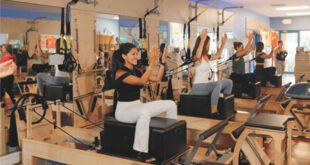By Regenexx Tampa Bay, Regenerative Medicine
 The body is an interconnected machine with each part working together in harmony. The lumbar spine is a crucial element of this machine. The hip, knee, and foot are all controlled by spinal nerves within the low back. A problem in the lumbar spine could create problems at any point in the lower body. Common lumbar issues include arthritis, foraminal and spinal stenosis, pinched nerves, disc problems, muscle atrophy, loose ligaments, and spondylolysis. In this article, we will give you a brief overview of these common lumbar spine problems along with their potential symptoms, causes, and treatments.
The body is an interconnected machine with each part working together in harmony. The lumbar spine is a crucial element of this machine. The hip, knee, and foot are all controlled by spinal nerves within the low back. A problem in the lumbar spine could create problems at any point in the lower body. Common lumbar issues include arthritis, foraminal and spinal stenosis, pinched nerves, disc problems, muscle atrophy, loose ligaments, and spondylolysis. In this article, we will give you a brief overview of these common lumbar spine problems along with their potential symptoms, causes, and treatments.
First, let’s take a look at the spinal column and its parts.
The Spinal Column
The spinal column is made up of vertebrae that are stacked one on top of the other with an intervertebral disc between each level to provide cushion and absorb shock. The cervical spine consists of the neck area and is made up of seven vertebrae (C1-C7). Following the cervical spine is the thoracic spine (T1-T12), the lumbar spine (L1-L5), the sacrum (S1-S5), and the coccyx. The posterior (back) portion of these vertebrae is known as the spinous process and on either side of these, connecting one vertebra to the next, are finger-joint-sized articulations called facet joints.
Another extremely important part of the spinal column is the spinal canal. This tunnel runs down the middle of the column and houses the spinal cord, which has many nerves that transmit muscle commands and sensory information throughout the body and to the brain. There are small holes in the spinal column where the nerves exit and branch off to other parts of the body. There is one at each level of the spinal column. One of these holes is called a foramen. Any of these structures can become damaged or diseased in some way and lead to pain, discomfort, or even disability.
Foraminal Stenosis
When the spine is healthy, spinal nerves easily traverse through the tunnels transmitting sensory information from each body part to the brain and provide impulses to the muscles so they can contract and move the body part. However, when the spine is unhealthy, the flow of information can be disrupted.
The disc or cushion in between the spine bones can bulge and/or the spine joints can get arthritis causing the foramen to narrow. This narrowing of the tunnel is called foraminal stenosis and can cause the nerves to get pinched. The pressure from a pinched nerve can cause muscle tightness, weakness, numbness, tingling,
burning, or electrical pain in the specific distribution of that nerve. For example, if there is a lower lumbar foraminal stenosis, you could experience numbness in your big toe. Sometimes the symptoms slowly manifest over time from a more subtle pinching of the nerve. If the nerve is irritated, it may release inflammatory substances into the tissue to which the nerve travels causing that tissue to degenerate more rapidly than other areas leading to painful problems such as tendinopathy.
You could have laser spine surgery to open up the hole, but this surgery can have major side effects and serious implications. Another way to surgically treat stenosis is with a spinal fusion, but the mention of a fusion should be a huge red flag to seek out other opinions. Why? Adjacent segment disease (ASD). After a fusion, the motion of the fused segments is limited and the biomechanical loads are transferred to the segments above and below the level of the fusion. These adjacent segments could get damaged and become painful over time resulting in additional surgeries.
Surgery is often performed after an MRI diagnosis of the problem. An MRI indicating stenosis is not enough to appropriately diagnose that stenosis is the cause of pain. If you do have foraminal stenosis, you should not put all your trust in MRI results. Patients may or may not have pain with foraminal stenosis. The MRI is a description of the appearance of the spine. Many people have stenosis and no noticeable problems. An experienced physician knows that it’s critical to treat the person, not the MRI. This can be determined by a thorough history and physical examination. Research also shows that skilled physical therapy is as effective as surgery in relieving stenosis symptoms.
Our approach to foraminal stenosis utilizes nonsurgical solutions to treat it before it progresses. Precise image-guided injections of the patient’s own platelets into the foramen and around the nerve can help manage the problem.
Facet Joint Osteoarthritis and Instability
The facet joints that we spoke of earlier can become injured from trauma or develop arthritis from cartilage breakdown due to wear and tear. Facet joints allow for and limit movement in the spine. When bending backward, these joints become compressed and when you bend forward, they open up. When damage or arthritis occurs, facet joints can become chronically painful, especially with movement. Facet arthritis is often referred to as Degenerative Joint Disease (DJD).
For facet arthritis or injuries, doctors may recommend a radiofrequency ablation (RFA) also referred to as a rhizotomy of the small nerve that senses pain from that specific facet joint. This is a destructive process that damages the nerve. Although this can be effective in some cases, it may leave the surrounding muscles weaker which can actually be a cause of back pain.
A surgical option is a lumbar fusion to bolt two or more vertebrae of the spine together to eliminate movement and therefore, pain. The nature of this surgery can also damage the muscles that stabilize the area. This is an irreversible procedure that can cause adjacent segment disease in the vertebrae above and below. This surgery should only be considered in the most extreme cases.
Our approach for DJD often includes high-dose PRP, platelet lysate, or stem cell injections precisely targeting the facet joints, surrounding ligaments, atrophied muscles, and around the nerves. This is a tissue preservation strategy that involves no cutting, surgery, hardware, or tissue destruction helping patients avoid pain medications and damaging cortisone injections.
Disc Problems
Within the lumbar spine, there are four types of disc problems that can occur. A herniated disc occurs when the outer covering of the structure breaks open allowing the inner gel to herniate out. A bulging disc is when the outer covering doesn’t completely break open, but the fibers are stretched and weak leading the gel to bulge. A torn disc means that the outer cover has a tear that causes or it may allow the leaking of chemicals on the associated spinal nerve. Lastly, a degenerated disc is one that has collapsed or narrowed due to insufficient living cells inside the disc not producing enough of the substances that keep the disc plump. A severely degenerated disc is usually not a source of pain unless it’s
bulging or leaking onto a spinal nerve. Earlier in the degeneration process, while the disc still has plumpness to it, tears in the back of the disc can be a source of low back pain that results in severe episodes of pain with sitting, coughing, sneezing, or lifting. When a disc is severely degenerated, it usually is no longer painful itself. However, the mechanical load of the compressive forces in the spine at that level are no longer being taken up by the disc and therefore get transferred to the facet joints leading to wear and tear and DJD as described above.
Generally, disc surgeries include either back fusions or disc replacement. Regarding fusion, the vertebrae are bolted together with hardware to keep them immobile. With disc replacement, the goal is to have fewer side effects than a fusion, however, research has shown that abnormal motion with an artificial disc can also lead to ASD. The other side effects of having a device implanted include wear-and-tear ions in the blood from the breakdown of the metal or plastic device, ongoing pain, and potential revision surgeries.
With our approach, herniated and bulging discs are treated based on the problem they are causing. For pinched nerves, instilling isolated growth factors or platelet lysate around the irritated nerve can help the nerve recover and become more tolerant of its narrow space. Injection of the surrounding ligaments and muscles provides for stability with better-controlled movements taking pressures off the disc and nerves. In some cases, bulging discs may be treated with a same-day stem cell treatment to reduce the size of the bulge or heal a tear. In other cases, cultured (grown) stem cells injected in a specific way may be required. Torn discs can be treated with either stem cell or PRP injections very effectively. Symptoms respond well to a treatment protocol focused on platelet and/or stem cell technology deployed to treat undesirable disc and lumbar segment movements due to lax ligaments and arthritic facet joints.
Pinched Lumbar Nerve
Pinched nerves can be caused by foraminal stenosis from bulging or herniated discs and facet joint arthritis as discussed. A pinched lumbar nerve can cause pain, numbness, tingling, or weakness anywhere along the route that particular nerve branch supplies. Pain may or may not be present in the low back.
Chronic knee pain could actually be due to a pinched nerve in the lumbar spine. A doctor may mistakenly conclude that the knee is the source of the pain. This is exactly why we find it so important to consider the entire musculoskeletal system as a whole rather than in parts and to take an extensive history and physical.
The surgical approach to a pinched nerve depends on the root cause. For example, if a disc bulge is to blame, it could be a discectomy and graft and/or lumbar fusion. If it is a foraminal stenosis, laser surgery may enlarge the foraminal opening where the nerve is being pinched. Problems with invasive lumbar surgery are many, including long recovery times and often continuing pain. Ultimately, the structure never fully functions as it originally did.
Our approach includes examining the full musculoskeletal system to determine the source of pain and the pinched nerve and then developing an appropriate treatment plan. Treatment may consist of precise image-guided injections of healing growth factors isolated from a patient’s own blood platelets, PRP, or stem cells.
Steroids, NSAIDs, & Other Drugs – Not Recommended
You may be presented with other treatments within the traditional orthopedics model for lumbar problems, including steroid shots or medications. Nonsteroidal anti-inflammatory drugs (NSAIDs) come with a long and growing list of dangerous side effects, such as sudden-death heart attacks, stroke, gastrointestinal bleeding, addiction, and overdose.
Narcotics can provide pain relief but are not addressing the issue directly and of course, can be addictive. Overdose has become an increasing public health issue.
Steroid shots have been shown to destroy local cartilage in the joint which can progress arthritis and provide no significant long term pain improvement. In fact, pain relief usually diminishes with repeated steroid injections. The list of problems with these injections is also lengthy.
There are supplements that can be a good alternative for pain and inflammation. Chondroitin and glucosamine have been shown to be effective pain relievers and can preserve cartilage. Curcumin derived from turmeric can also decrease inflammation and relieve pain from arthritis and other issues.
Our spines are tuned to precision and attempting to rearrange the spine’s biomechanics with fusions and surgeries is often a bad idea. It is essential to understand that where it hurts may or may not be where the primary damage is located.
Acting on a lumbar spine problem while it’s still a small problem or when the issue first appears, will be less of an issue than trying to take care of it when it becomes a larger problem that spirals out of control. Conservative options may help in some cases, but if these options have failed, we urge you to seek out interventional orthopedic solutions!
RegenTampaBay.com
8600 Hidden River Parkway, Suite 700
Tampa, FL 33637
813-296-2614
Dr. James Leiber
James Leiber, DO, is the founder and medical director of Regenexx Tampa Bay. He is a former officer, physician, and educator in the Air Force, including personal physiciancian to the vice president and president at the White House. He is triple board certified in Neuromusculoskeletal Medicine (AOBNMM), Pain Medicine (CAQPM), and Family Medicine (ABFM), as well registered in Musculoskeletal Sonography (RMSK).
Dr. Leiber specializes in Interventional Regenerative Orthopedics with years of experience and is honored to have been the first Regenexx Network Provider in Florida. In 2012, Dr. Leiber began offering the nation’s most advanced non-surgical stem cell and platelet treatments (PRP) for injuries and arthritis under image guidance utilizing ultrasound and fluoroscopy (X-ray).
He is a published author, presenter, and is currently the program director for the Interventional Orthopedic Foundation.
He lives in Sarasota, Florida with his wife and teenage daughter. Dr Leiber travels regularly to Denver, to teach regenerative orthopedic techniques to fellow doctors, and to Grand Cayman, where he is also licensed to treat patients.
Ron Torrance II, D.O. – Board Certified in Sports Medicine and recent co-author of Exercise 2.0 for Regenexx and author of the 2018 best paper of the year on The Concussed Athlete. Dr. Torrance has achieved semi-professional ranking as a beach volleyball player and trains as a competitive CrossFit athlete.
Ignatios Papas, D.O. – Specializes in Physical Medicine and Rehabilitation. He is a research collaborator with Columbia and Cornell University on multiple projects. Dr. Papas enjoys spending time with his wife and son, playing soccer, practicing guitar, and listening to historical podcasts.
Michael Amoroso, M.D. is Board Certified by the American Board of Anesthesiology and the American Board of Pain Medicine. He has been a long-time runner and brings a vast amount of experience to his role at Regenexx Tampa Bay. Dr. Amoroso travels frequently back to his home in New Jersey to visit his children and small grandchildren.
 Central Florida Health and Wellness Magazine Health and Wellness Articles of the Villages
Central Florida Health and Wellness Magazine Health and Wellness Articles of the Villages



